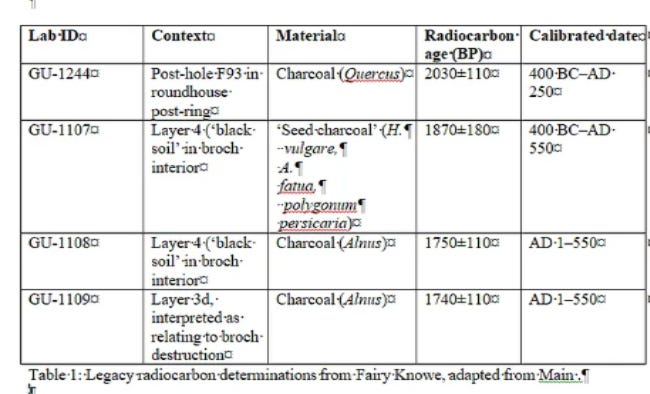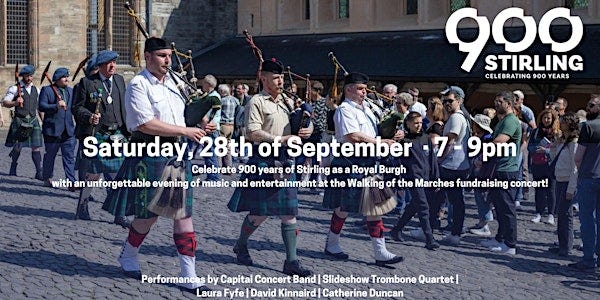Brochs in Stirling
While brochs (2000 year old tower like structures) are normally found in the north and west of Scotland there are some in the south too and Stirling has the highest concertation of these so-called southern brochs. The most up to date background is in the Lesley Macinnes paper here, which is free.
Now I know that your thinking of Mousa….but our brochs tend to be smaller, less well built and slightly later….
Coldoch Broch near Doune, which is in a private garden….so please don’t visit!
I’ve been working on these for years, new surveys, new excavations and new reviews of the objects. To date we have worked on Keir Hill of Gargunnock, Torwood broch and Castlehillwood dun and a review of that work to date is here. Of course our work at Dumyat and Kings Park is all part of the same research.
Fairy Knowe Broch
My focus today in on Fairy Knowe which is the low mound to the east of Buchlyive.
The site was dug in the 1970s by my predecessor Lorna Main and the results are here. Its a great paper and a fascinating site which started as a timber roundhouse which was rebuilt as a broch.
The key finding is an apparent destruction layer which Lorna dated on the basis of the Roman finds to the pre-Antonine period. This all made sense at the time but we’ve dug more sites and we know that Roman objects were so rare and valuable that they were curated for generations and they might have been ancient when finally buried.
Fragment of the lower part of a reeded handle of a bottle. Blue-green, somewhat bubbly, bottle glass. Unidentified bottle glass
So as part of my ongoing research I collaborated with Dr Sophie McDonald of SUERC (Scotland’s radiocarbon lab) to redate the site. We started with the older stuff ..could we date the first roundhouse? Could we look at the stuff deposited with the Roman pottery to see what age it was and to see if they were heirlooms? We got funding from the Society of Antiquaries of Scotland and got going. The report below deals with the first set of dates and I am just about to send the second set out!
Use it or lose it!
Before I begin we could only redate the site because of the wonderful Smith Museum and Art Gallery stored the archive. So thanks to the team there and if you’ve not been for a while please go and support them!
The first results…..
A version of this will appear in the Society of Antiquaries of Scotland newsletter.
Destruction, Abandonment or Ritual Enrichment: Re-Dating Fairy Knowe
Drs Murray Cook and Sophie McDonald
While brochs are normally located to the west and north of Scotland, Stirlingshire contains Scotland’s highest concentration of southern brochs and a variety of related forms. These have tended to be dated on the basis of Roman objects within their assemblages and to be directly associated with the Empire’s military occupation of southern Scotland in the first and second centuries AD.
Dr Murray Cook is engaged in an ongoing programme of research into these structures: re-dating antiquarian sites and re-analysing their object assemblages (site analysed to date include Torwood Brochs, Keir Hill of Gargunnock and Castlehillwood Dun, all of which were supported by this Society). This has revealed a more varied settlement system in which complex broch-like architecture is present. The Roman objects do not date their construction but rather a point during their occupancy. Such Roman objects are often heirlooms.
With all of this in mind Dr Cook approached Dr McDonald of SUERC to undertake a two phase programme of re-dating of Fairy Knowe broch which was dug by Lorna Main in the 1970s but published in the 1990s. Funding for the project came from this society’s Dr Euan MacKie fund, which represents a legacy form the great man himself. The authors were very pleased to receive the funding and to hope Euan would’ve been interested in the results. Our first step was to recalibrate the existing dates which are published below for the first time.
Even following recalibration the large error range underline the need for new dates. The dating programme was extremely limited yet the site had a pre-broch and what the author described as a destruction layer, associated with significant quantities of Roman objects. All of the archive is available in the Smith Museum and Art Gallery in Stirling. The first set of samples tried to establish the date of the pre-broch roundhouse, the material here was far more degraded and its stratigraphy more ambiguous than hoped. A major disappointment was the roundhouse timbers recovered from the excavation which could not be dated as they had been treated with an unknown chemical. The only available date from this phase of work indicated activity across the first three centuries AD.
The successful date (SUERC-124872) gave a calibrated range of AD 62-213 (Figure 1 and Table 2). The one successful date was identified as being associated with external paving but it is not clear from the site record if this material was from under or over the paving, limiting the date’s utility.
Phase Two is currently underway, Lorna Main’s ‘destruction layer’ is full of well preserved animal bone. The original excavation report indicated that there were no Post-Flavian objects in this assemblage and the presence of a destruction layer was used to indicate the deliberate abandonment of the site, presumably following the Flavian retreat. However, the absence of Flavian material may reflect the choices of either the Romans or inhabitants rather than the site’s chronology. It is also clear from other excavation (most locally Leckie broch which contain several imposed hearths) that there can be accumulations of material within a structure during its occupancy. Is it possible the Fairy Knowe destruction layer represents the same thing? It is also possible that the Roman objects are heirlooms being gathered for deliberate burial within the structure. It is hoped that the accurate dating of the animal bone will indicate the duration of settlement at the site and thus how old the Roman objects where when deposited.
What’s Next?
Well as I write this the second batch of bone has gone for dating and looking at them there are some substantial bones…big hunks of cattle of red deer. Might this be the remains of a massive feast associated with the closing of broch? Or perhaps the settlement carried on outs side and the broch just became a massive rubbish dump?
One final note is that each radiocarbon date costs £414 and the funding is competitive and that is why your support means so much.
Conclusions
As I keep saying Stirling is amazing and the fact that we can squeeze new information from nearly 50 year old excavations is incredible, as is the fact that there are so many people across Scotland who help us find out more about our past! Thanks SUERC and Catherine Smith who identified the bones!
I hope you don’t mind one final plug for The Marches fundraising concert in the Great Hall!
The Marches Court will be organising a fund raising concert at the Castle on the 28th September 6:30-10 . The Stirling 900 Concert promises a wonderful evening of musical performances set against the stunning backdrop of Stirling Castle. Enjoy performances by the Capital Concert Band, Slideshow Trombone Quartet, and performances by Laura Fyfe, David Kinnaird, and Catherine Duncan.
It will also feature a charity auction of some objects from my decade of excavations across Stirling (all approved by the both Treasure Trove and the Council) and will include evidence of a Roman war crime, 17th century nails from St Ninians, a bit of Stirling’s City Wall and a near 500 year old cobble from King Stables lane…perhaps walked on by Mary Queen of Scots and James Vth!
Join us for a memorable evening of entertainment as we celebrate the 900th anniversary of the Royal Burgh of Stirling!
Additional Details:
Timings: Arrive at 6.30pm for 7pm start, anticipated finishing time 10pm.
Parking: Free parking available on the esplanade
Refreshments: Bar available on site
If you can’t use this we’ll take cash on the door!
Have a question? Get in contact!













Thanks for this. Really interesting, are there any findings that suggest the form of Stirlingshire Brochs varies from the more Northern sites?
Thank you Murray. Absolutely fascinating. Unfortunately, I cannot attend tomorrow but hooe there is a great turn out for the event.